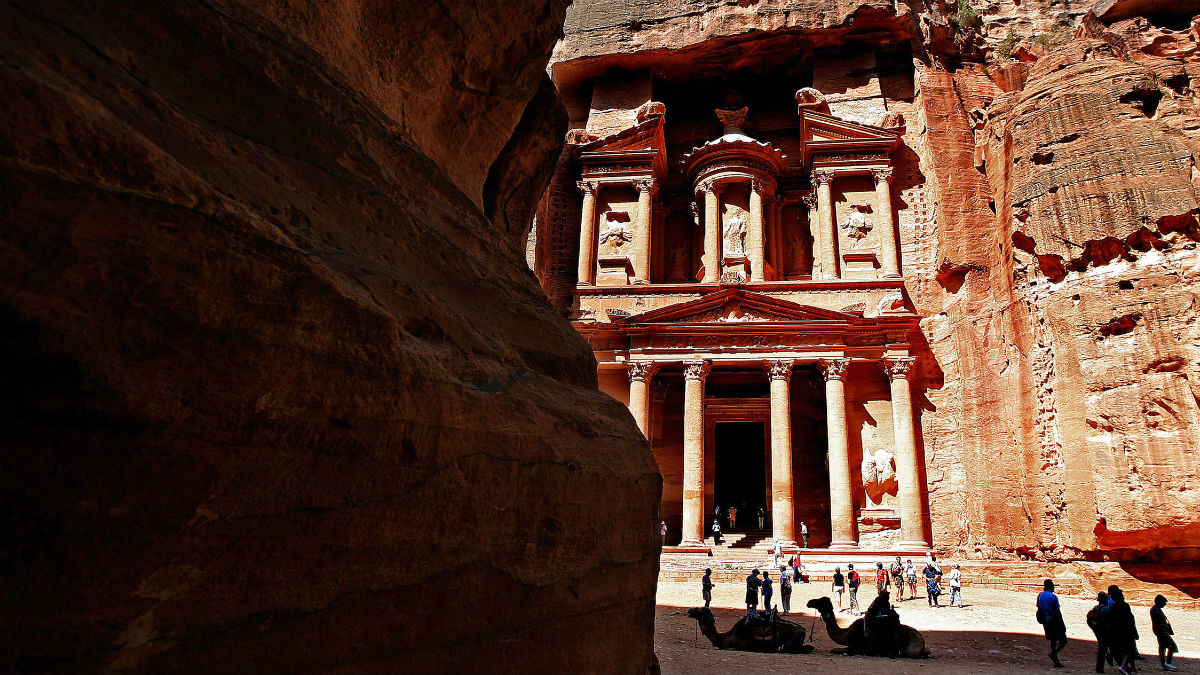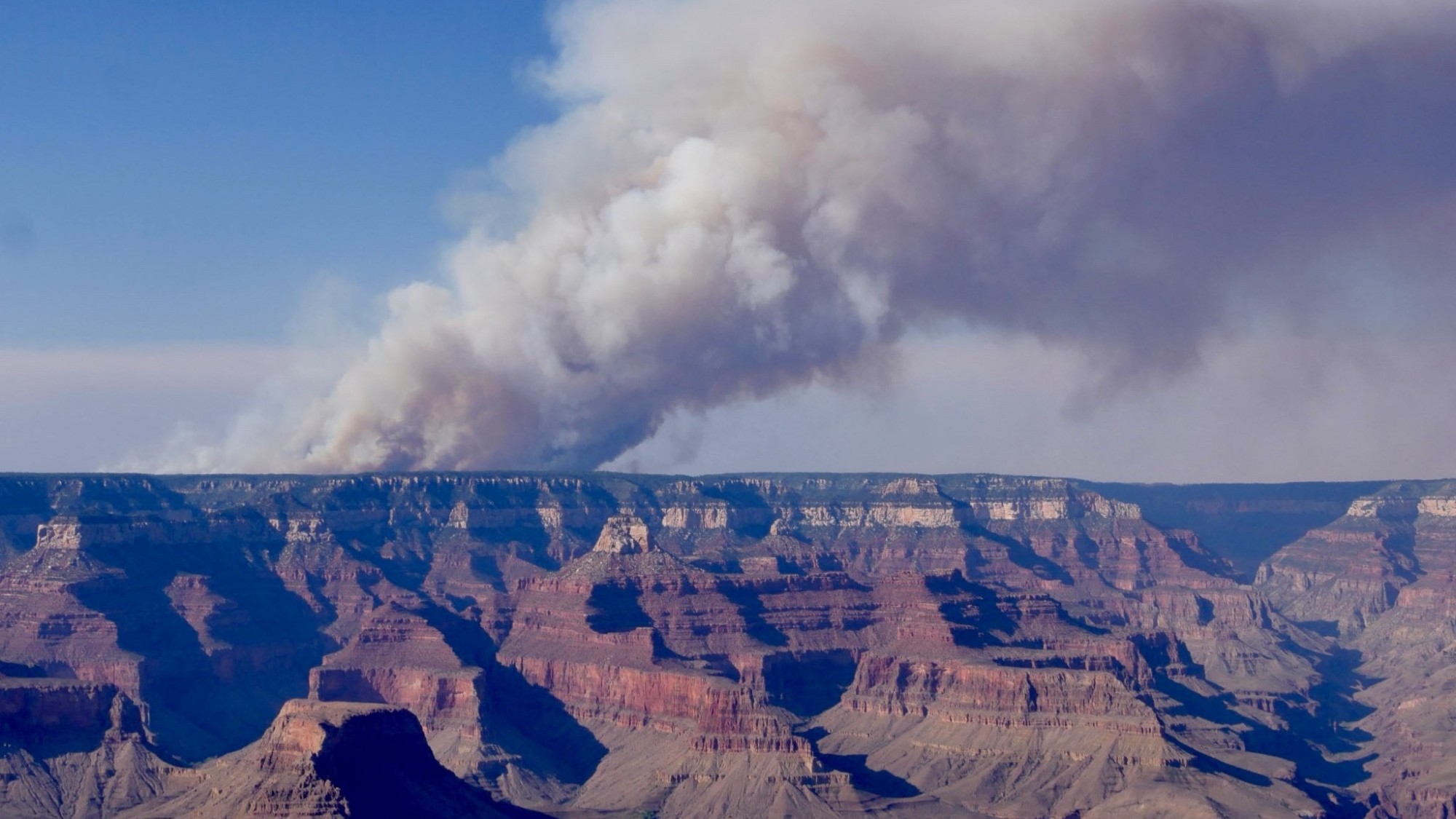'Massive' new monument found in Petra
Archaeologists say structure twice the size of Olympic pool was 'hidden in plain sight'

Satellite technology has unveiled an enormous, previously undocumented monument hidden beneath the sands of Petra, one of the most famous archaeological sites in the Middle East.
Every year, half a million tourists flock to the impressively preserved remains of the city centre, which was built in the 4th century BC and is partially carved out of the surrounding mountains. However, the archaeological park that surrounds the town encompasses about 102 square miles (264 sq km) and some of this area has not yet been fully investigated.
The structure is described as being roughly the length of an Olympic swimming pool and as wide as two, with remains of pillars and a large staircase suggesting it performed a ceremonial function. While the site has not yet been excavated, pottery found on the surface suggests it dates from Petra's peak in the 2nd century BC.
The Week
Escape your echo chamber. Get the facts behind the news, plus analysis from multiple perspectives.

Sign up for The Week's Free Newsletters
From our morning news briefing to a weekly Good News Newsletter, get the best of The Week delivered directly to your inbox.
From our morning news briefing to a weekly Good News Newsletter, get the best of The Week delivered directly to your inbox.
Once a bustling trading city belonging to the Arab Nabataean tribe, Petra was abandoned when the Byzantine empire dissolved in the 7th century and was not re-discovered by the wider world until 1812.
"Even after two centuries of fieldwork in Petra and its environs, new discoveries and identification of monumental structures continue to be made," Parcak and Tuttle say in a study published by the American Schools of Oriental Research.
"I've worked in Petra for 20 years, and I knew that something was there," Tuttle told National Geographic. "But it's certainly legitimate to call this a discovery."
A free daily email with the biggest news stories of the day – and the best features from TheWeek.com
-
 What will next year’s housing market look like?
What will next year’s housing market look like?The Explainer Here is what to expect from mortgage rates and home prices in 2026
-
 Is Trump in a bubble?
Is Trump in a bubble?Today’s Big Question GOP allies worry he is not hearing voters
-
 ‘Managed wildfires have spread out of control before’
‘Managed wildfires have spread out of control before’Instant Opinion Opinion, comment and editorials of the day
-
 Femicide: Italy’s newest crime
Femicide: Italy’s newest crimeThe Explainer Landmark law to criminalise murder of a woman as an ‘act of hatred’ or ‘subjugation’ but critics say Italy is still deeply patriarchal
-
 Brazil’s Bolsonaro behind bars after appeals run out
Brazil’s Bolsonaro behind bars after appeals run outSpeed Read He will serve 27 years in prison
-
 Americans traveling abroad face renewed criticism in the Trump era
Americans traveling abroad face renewed criticism in the Trump eraThe Explainer Some of Trump’s behavior has Americans being questioned
-
 Nigeria confused by Trump invasion threat
Nigeria confused by Trump invasion threatSpeed Read Trump has claimed the country is persecuting Christians
-
 Sanae Takaichi: Japan’s Iron Lady set to be the country’s first woman prime minister
Sanae Takaichi: Japan’s Iron Lady set to be the country’s first woman prime ministerIn the Spotlight Takaichi is a member of Japan’s conservative, nationalist Liberal Democratic Party
-
 Russia is ‘helping China’ prepare for an invasion of Taiwan
Russia is ‘helping China’ prepare for an invasion of TaiwanIn the Spotlight Russia is reportedly allowing China access to military training
-
 Interpol arrests hundreds in Africa-wide sextortion crackdown
Interpol arrests hundreds in Africa-wide sextortion crackdownIN THE SPOTLIGHT A series of stings disrupts major cybercrime operations as law enforcement estimates millions in losses from schemes designed to prey on lonely users
-
 China is silently expanding its influence in American cities
China is silently expanding its influence in American citiesUnder the Radar New York City and San Francisco, among others, have reportedly been targeted